Introduction
I love spoiler season. As a devoted limited player I’m waiting day by day for new cards to be spoiled. Not as many might think, to see powerful rares and bomb status mythics. Rather, I'm interested in the commons and uncommons. These nuts and bolts limited cards are usually what defines the set and none more so than the multicolor signpost uncommons.
Not only do these help shape the flavor of the draft environment but they often indicate the most powerful synergies within any color pair. Not to be followed blindly, they are however a great jumping off point for discussing draft strategy in a new set. With spoiler season finally coming to a close we now have visual confirmation of all ten of these signposts. So let’s talk limited!
Azorius (White-Blue)
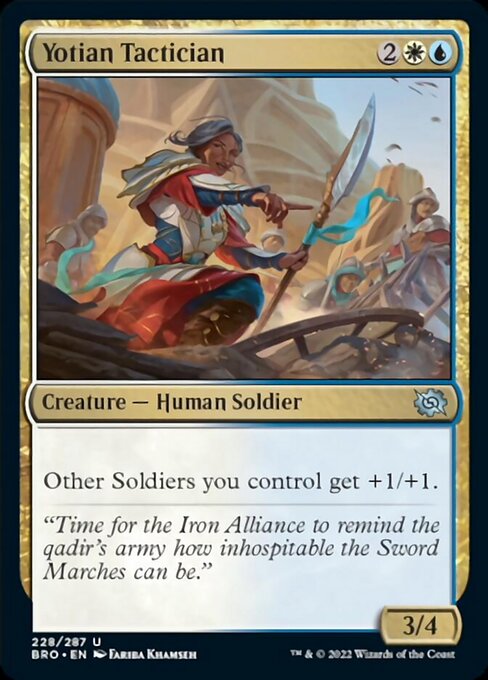
The theme for Azorius isn’t overly complicated this time around, it’s soldiers, lots of em. Yotian Tactician, the signpost uncommon, makes that pretty clear. With just one other soldier on the battlefield this card represents 4 power and 5 toughness for four mana and of course the sky's the limit in that regard. Clearly this color pair will be rewarded if it can flood the board with this creature type.


Luckily for us, there’s no shortage of soldiers to choose from in this color pair. Front runner for the most gluey card in the set, Mass Production puts a whopping four soldiers onto the board in one fell swoop. Whereas Zephyr Sentinel, an excellent rate card in its own right, also offers a rescue package for any creatures in a difficult spot.
Selesnya (White-Green)

This color pair, as shown clearly by Yotian Dissident, cares about artifacts entering the battlefield. With enough artifacts entering play the Dissident has the potential to become a credible threat itself or better still spread the risk by buffing another creature. Thopter Architect, another payoff for the theme grants flying and will be a premium pick up for those with enough enablers.
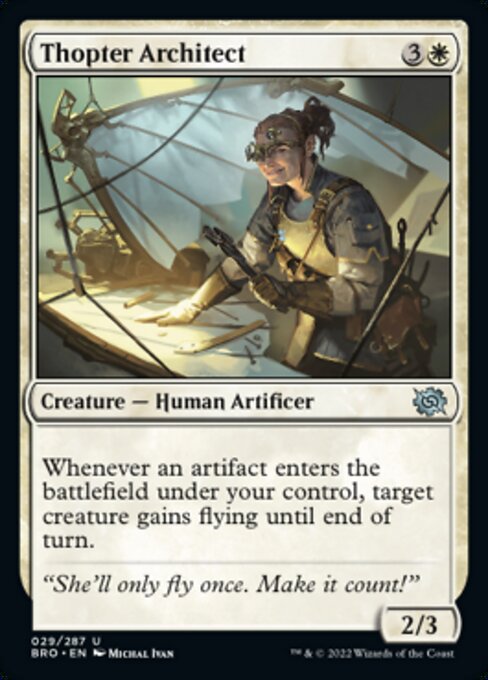
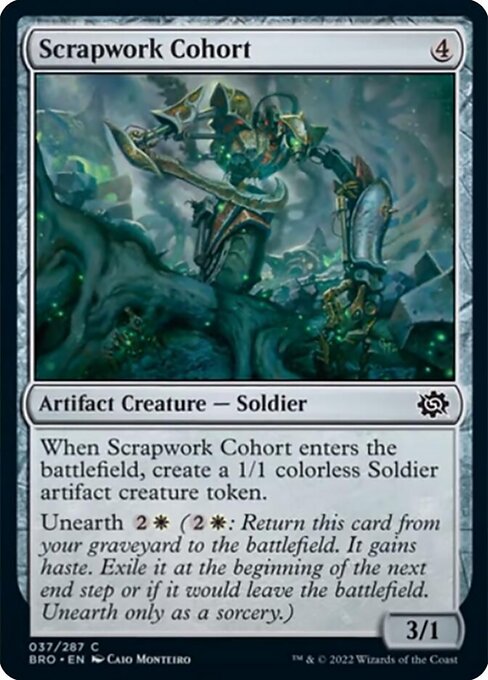
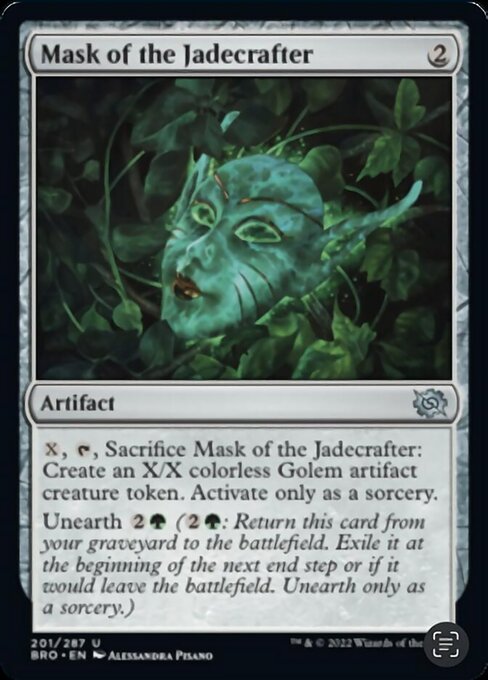
Both Scrapwork Cohort and Mask of the Jadecrafter are likely to find a home in this archetype, each providing multiple artifacts from a single card. Neither of these cards represent excellent value in a vacuum, but with up to four triggers a piece they certainly have synergistic potential.
Dimir (Blue-Black)
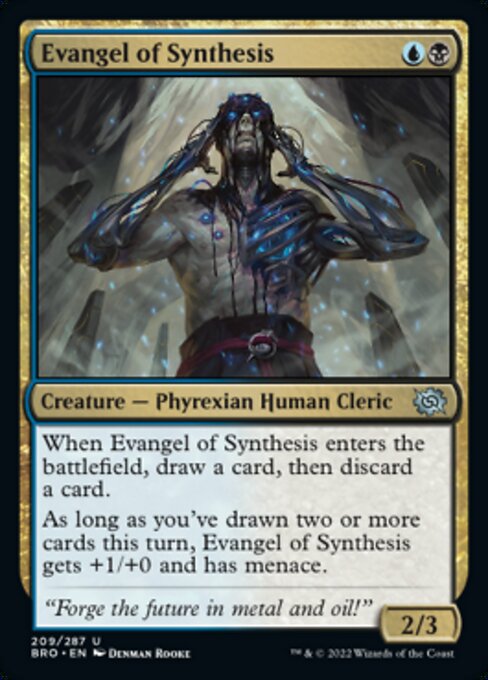
Dimir’s signpost uncommon Evangel of Synthesis is a nicely costed 2/3 body which allows you to loot when it enters the battlefield. It’s the static ability here however that indicates Dimir’s strategic direction. By drawing cards, something we would love to do anyway, we can turn this two drop into a credible threat.
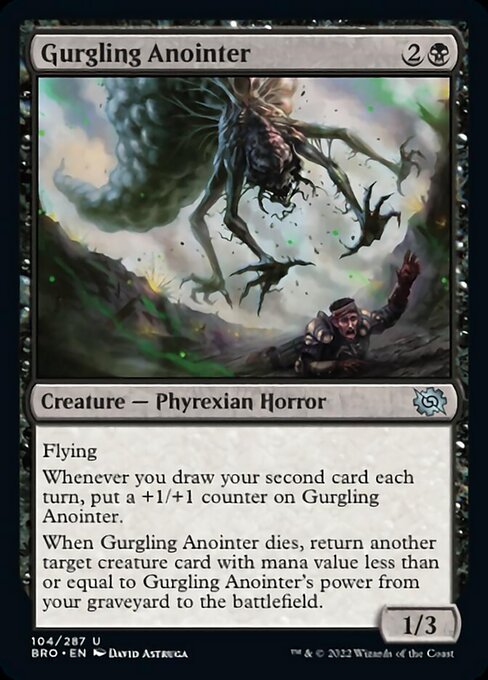

Creatures such as Gurgling Anointer and Thopter Mechanic reinforce the theme, both benefiting when we draw cards which is trivially easy to do in both Blue and Black. They also both have sweet triggers when they die meaning that dead or alive they will continue to affect the battlefield.
Of course the key to success in this type of archetype is balancing your payoffs against your enablers. Here that means having plenty of ways to draw cards. Luckily for us Blue is packed with looters and draw spells and even black has multiple ways to draw cards.
Rakdos (Black-Red)
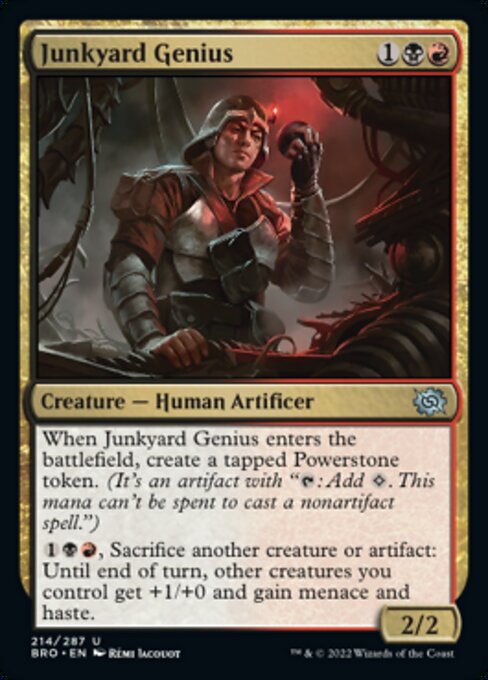
Rakdos’ signpost uncommon Junkyard Genius, is pointing us towards a familiar theme in this color pair; sacrifice! Of course this time around we are able to sacrifice artifacts as well as creatures which is only fitting for an artifact set.
This card is strong partly because it’s synergistically self-contained. The Powerstone token provides initial ramp, allowing you to get your team onboard quickly, but can also be sacrificed later to gain the trigger. Let’s face it, pumping your entire team whilst simultaneously giving them menace and haste is no joke and will put some serious pressure on your opponent.
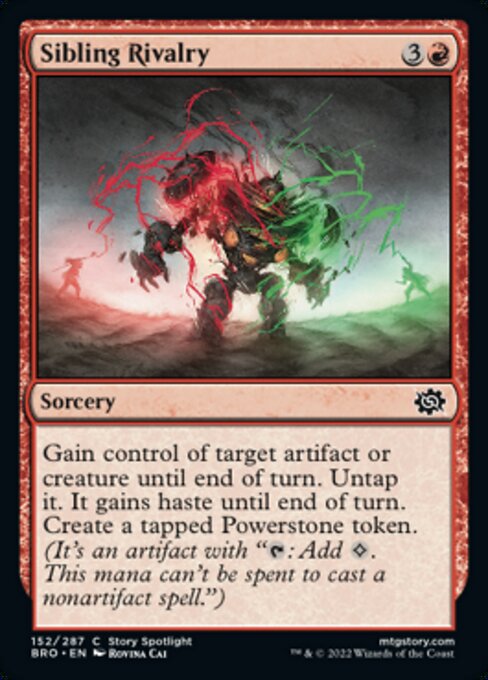
For those with a little mana to spend Sibling Rivalry will make an excellent addition to the archetype. Of course steal and sac is nothing new in limited but it sure is a great way to destabilize your opponents board and swing a game in your favor. Getting the Powerstone here is nice, as it can provide a little extra mana to activate a sacrifice trigger.
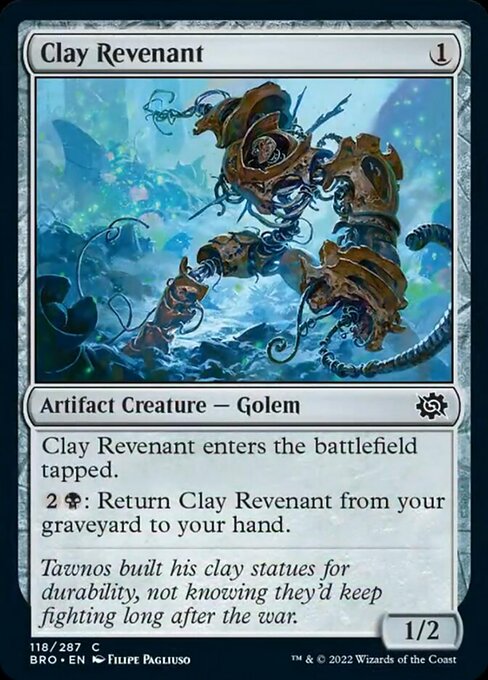
Perfect for those looking to grind their opponents out Clay Revenant is ideal sacrifice fodder. Cheap to get on the board this can be raised from the dead over and over again meaning you can gain trigger after trigger after trigger.
Gruul (Red-Green)

Unlike the other color pairs, Gruul’s signpost uncommon doesn't seem to be pointing us in any specific direction. Clearly Arbalest Engineers is a strong and flexible card; 3 power and 3 toughness for three mana is a solid baseline and the other abilities may come in handy in certain situations. Yet it doesn’t provide a clear path to help us navigate the draft.


Without any solid theme, a return to basics is probably a solid approach with Gruul. Powerful removal spells such as Obliterating Bolt may pull you into red whereas a card like Obstinate Baloth might tempt you into Green. That said, with fewer reasons to enter this archetype it’s likely best left alone unless both colors are wide open.
The Brothers' War
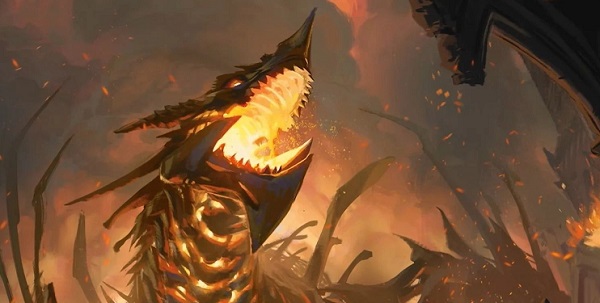
Orzhov (White-Black)

Orzhov’s theme is reanimation, or more specifically reanimating creatures with mana value three or less. The signpost here, Hero of the Dunes, may be a little on the small side, however, returning an artifact or creature from the graveyard to the battlefield is a serious bonus. It’s the ability to pump your team, however that pushes this card over the edge. Assuming we can pack out the board with one, two and three drops, this has the potential to be game changing.
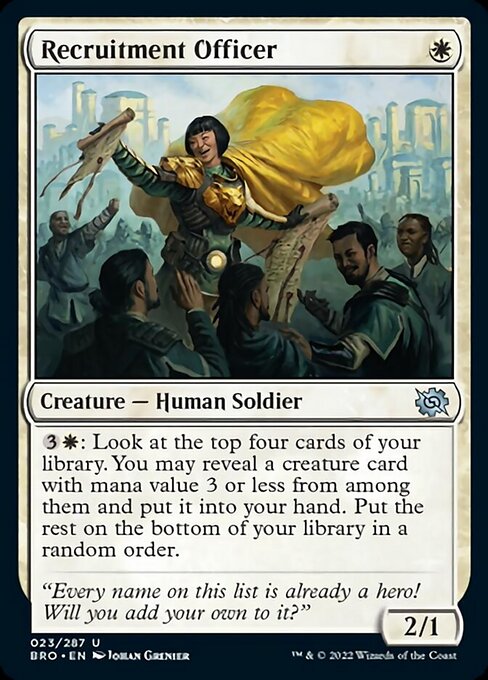
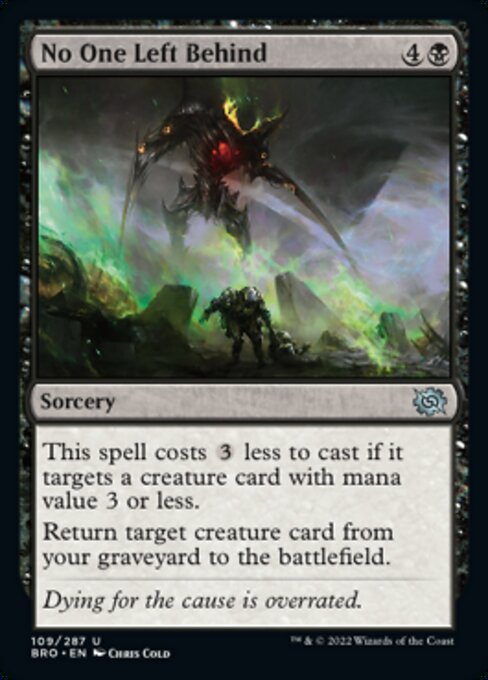
Other payoffs for the archetype include Recruitment Officer which offers an excellent reanimation target for a player with mana to spend and bodies available in their yard. Whereas No One Left Behind is an interesting take on the usual five mana reanimation spell. Getting a cost reduction for cheap creatures makes this more flexible and, assuming we have high value targets, gives it more potential too.
Golgari (Black-Green)
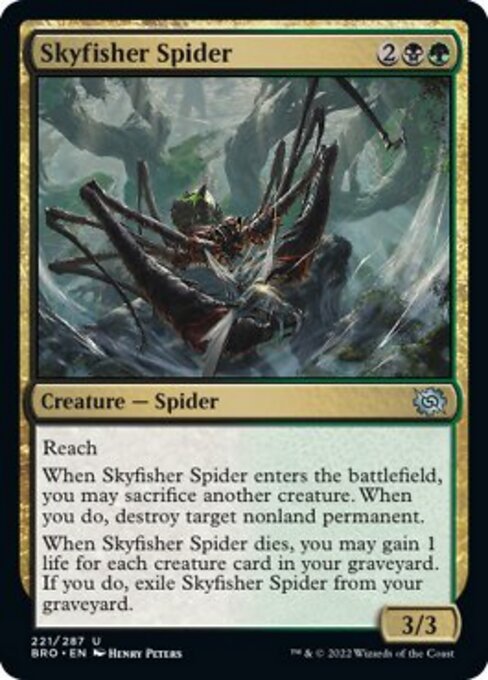
Golgari’s signpost uncommon, Skyfisher Spider is a powerful card make no mistake. Exchanging your worst creature for your opponent's best permanent will often feel like a two for one and the life bump when it dies is a nice addition.
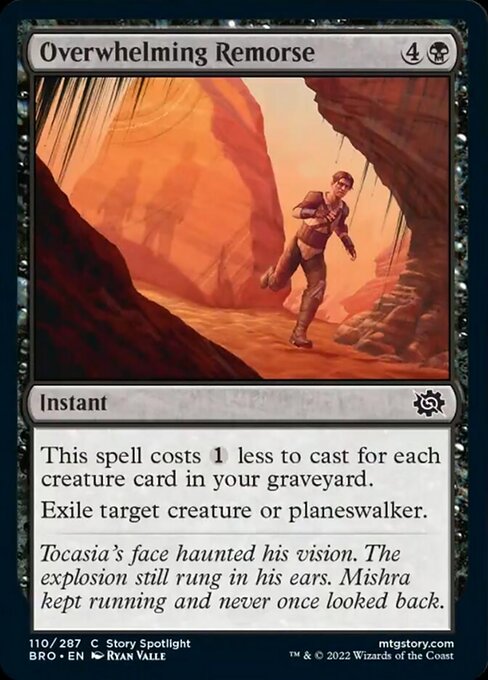
This time around Golgari’s theme is the graveyard; or more specifically having a large number of creatures in your yard. Overwhelming Remorse is a fine payoff for this archetype, although one that many players will have their eye on. Five mana to exile a creature or planeswalker at instant speed is only a little below rate and it won’t take much work to make this an incredibly efficient removal spell.
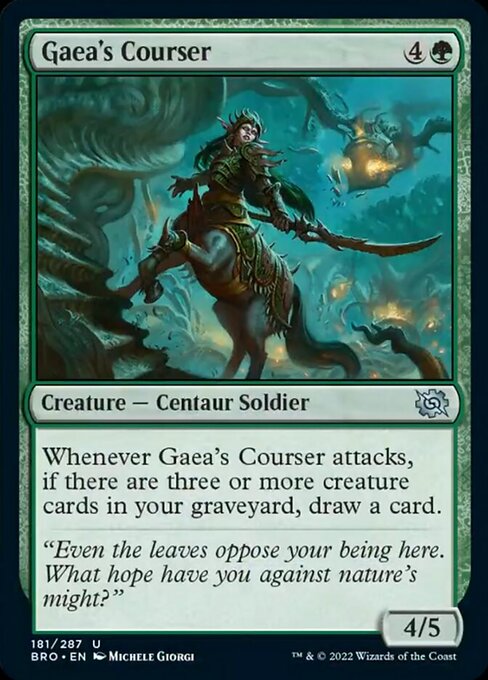
Gaea's Courser is another payoff here, although one that requires considerably more work. Three creatures in the yard isn’t unreasonable, however untapping with this thing and having good attacks may be a stretch in some games. Of course, when things go well, this is exactly the sort of card that can run away with a game.
Izzet (Blue-Red)
As per usual, Izzet’s theme revolves around casting non-creature spells. Of course this includes artifacts, so for once we won’t need to load up solely on instants and sorceries. Third Path Iconoclast makes a great early game play, assuming we can follow it up with a barrage of suitable spells. As does Monastery Swiftspear, a long awaited addition to MTG Arena.
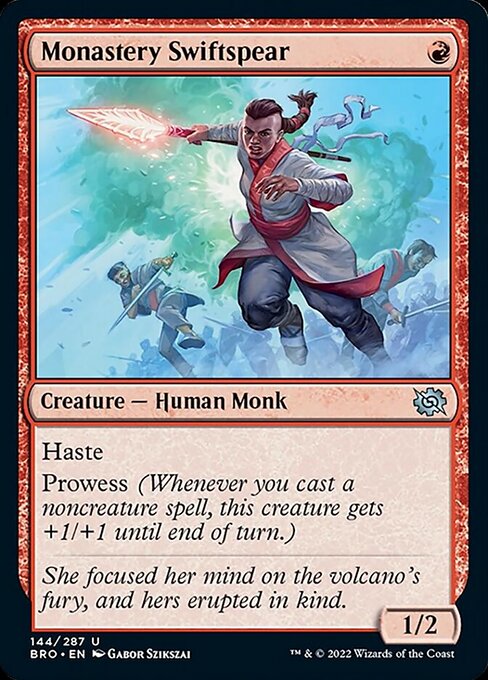
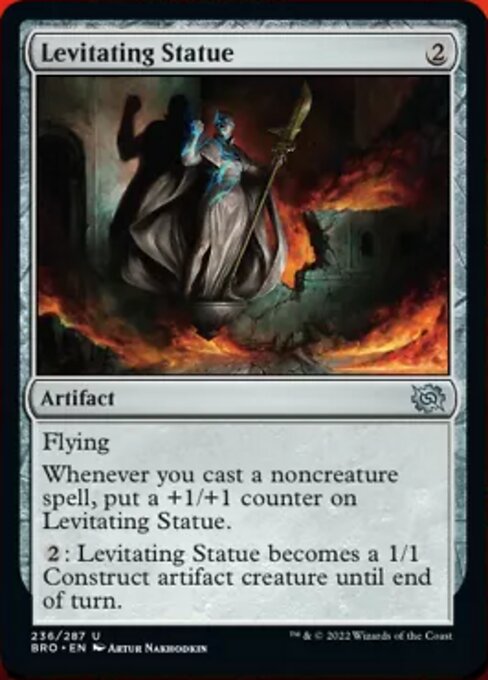
Searching for non-creature spells we find Levitating Statue, which has the potential to be great in this archetype. Providing a threat that grows over time, this has the added benefit of allowing you to affect the board whilst still counting as a noncreature spell.
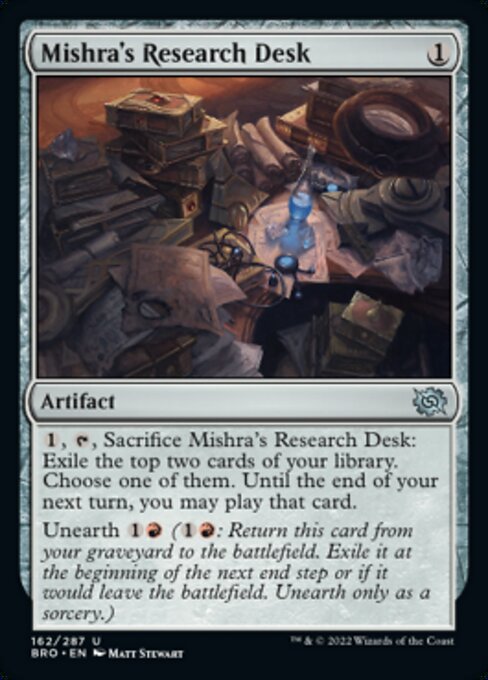
Mishra's Research Desk provides a way to keep the cards flowing whilst also giving a couple of non-creature triggers. Efficient this is not, however the modular nature of this card and the selection it provides may be enough to make up for that in the right deck.
Boros (White-Red)

The signpost here, Fallaji Vanguard, leaves no doubt that we should be turning creatures sideways, as per usual, in Boros. With a single creature entering the battlefield during your turn, this could be attacking as a fearsome 4/3 first strike, a statline that is extremely difficult to deal with in combat.
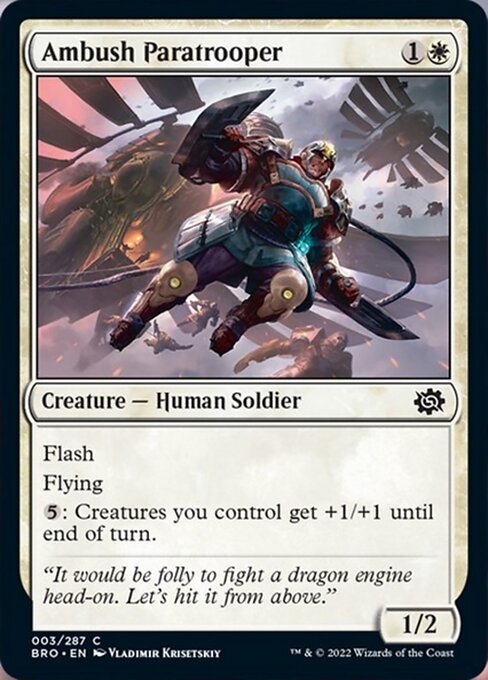
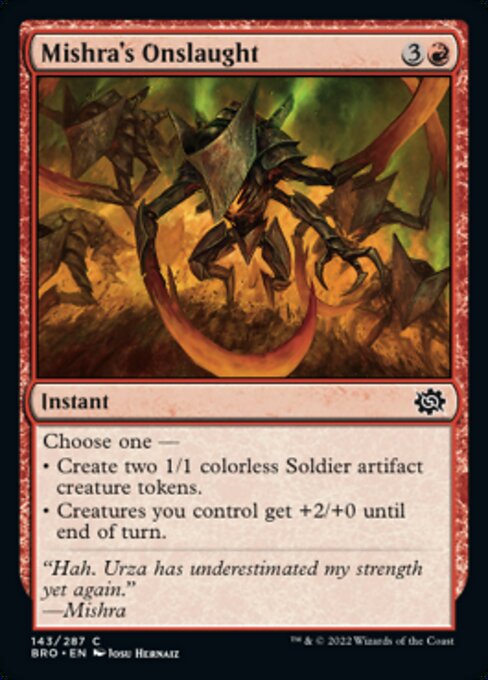
It’s the ability to ‘throw’ this bonus around, however, that really makes the Vanguard formidable. With this card on the board, creatures with flash such as Ambush Paratrooper can become combat tricks in their own right. Whereas an instant like Mishra's Onslaught has the potential to be devastating when timed right, using either mode.
Simic (Blue-Green)
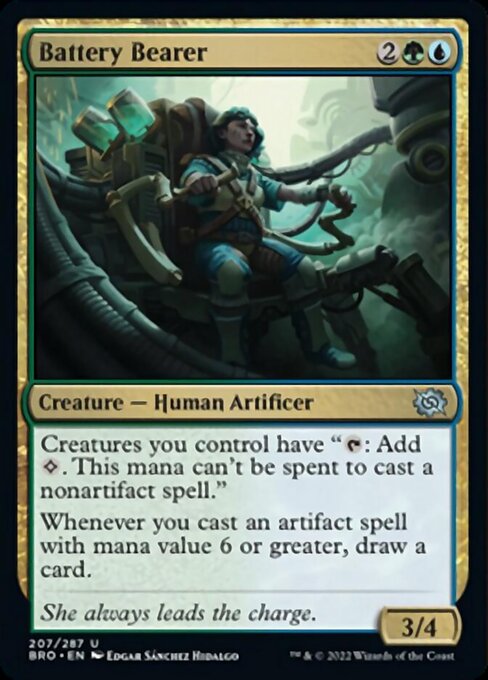
Simic’s signpost uncommon Battery Bearer is another card that is both an enabler and a payoff for a specific strategy. Providing the means and the end, this card turns all your creatures into mana dorks before paying you off for casting huge artifacts. Perhaps I’m just a sucker for Simic Ramp but this seems like a pretty sweet plan to me.
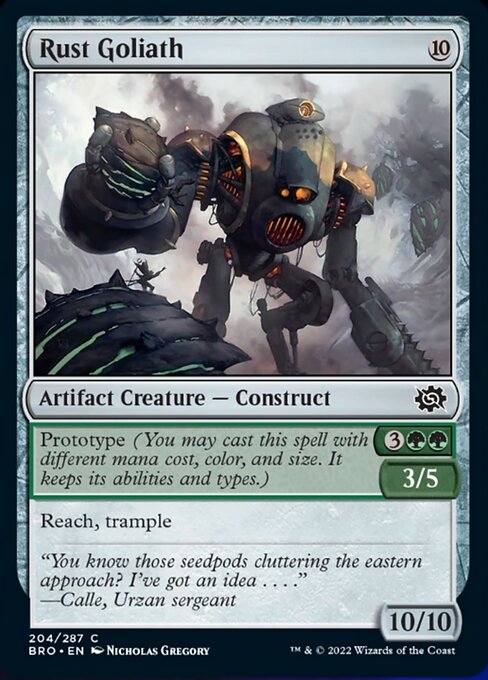
Partly thanks to the Prototype mechanic, The Brothers’ War has no shortage of huge artifacts to ramp into. Rust Goliath for instance has the potential to be an earth shattering 10/10 with reach and trample but also has the fallback option of being cast as a Spider variant. This get out clause is worth its weight in gold, as many players know, being stuck with an uncastable ten mana card is a great way to lose a game.

Argivian Avenger also looks like a great fit for this type of strategy. Not too expensive, it’s extremely versatile and just costs enough mana to net you a card with the Battery Bearer.

In terms of backup enablers Fallaji Excavation looks a little thin to be worth a card. However, in a deck packed with high mana cost monstrosities, the tempo loss might be an acceptable trade off, if it allows you to cast them on curve.
Final Words
Thanks for making it all the way through with me. As I’m sure you can tell, I'm super excited about this new set! If you’re looking to draft with your friends then please consider buying a draft box from Amazon using my affiliate link. This will help to keep the site alive and allow me to keep writing great content. Many thanks and good luck in your first few drafts! Dave ‘Angri’ Warner.
Affiliate link - More info.
Check Price
Dave ‘Angri’ Warner
Angri started playing Magic The Gathering during the Ice Age expansion. Proud to have collected a full set of 4th Edition, he was horrified to discover that, whilst he was away at college, his mom had donated his cards to a thrift store! With two mathematics degrees safely under his belt, Angri turned his attention to the world of online poker. Following a 10 year stint as a professional poker player, he finally returned to the glorious game of his youth. When not found playing or writing about MTG, he enjoys hanging out with his small family or riding an electric bike around the polluted English city he calls home.
Affiliate Links
This page contains affiliate links. As an Amazon Associate I earn from qualifying purchases. This means that, If you choose to purchase a product after following this link, I will receive a small commission. Many thanks to anyone choosing to do this - it will allow me to keep publishing great content, Dave.
